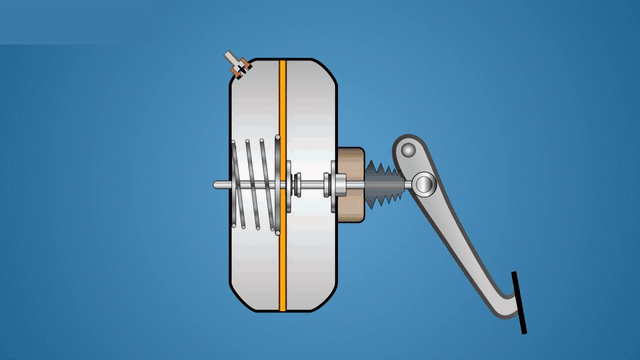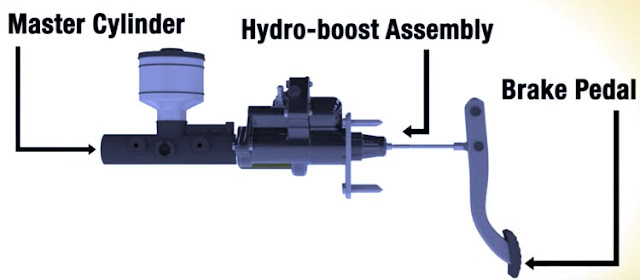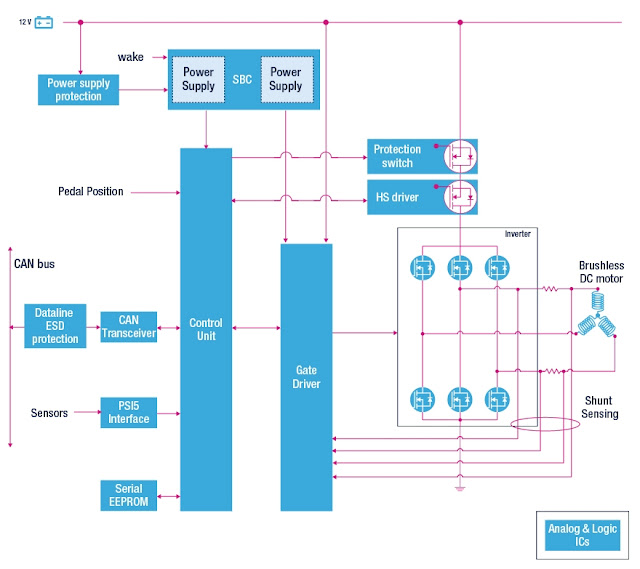What is Brake Booster?Types of Brake Booster
A brake booster fulfills the need to applying extra force on the brake pedal to stop the vehicle. Before this modern braking technology drivers had to exercise their foot’s force on the pedal. A brake booster is not only safe and reliable it makes the drivers feel comfortable too.Types of Brake BoosterHow many types of Brake Booster are there?
There are four main types of brake boosters. They name as1. Vacuum Booster: This type of boosters are used commonly. The reason behind this is its’ simple construction and it uses the vacuum to multiply brake pressure. The engine's intake manifold holds a vacuum port where the vacuum diaphragm remains connected. These are two types- atmospheric suspended and vacuum suspended.
2. Hydro-Boost: Hydro-boost supports the braking system by taking hydraulic pressure from the power steering pump. The vehicles with hydro-boost are easy to work on and no special equipment are needed.Hydro-Boost produce more boost than Vacuum booster.
3. Electric brake Booster: It is developed to reduce the pedal pressure for braking. Sensors are used to take the action's of driver. Electric brake booster use electronic system to operate the master cylinder with the brushless motor. Usually it enhance the driver comfort and passenger safety.
4. Electro-Hydraulic brake booster: Electro-hydraulic braking system which is directly connected to brake pedal and car's braking system.It is the first step of automotive brake by wire system. It uses Hydraulic pumps to produce the necessary brake pressure.These are very light and smaller in size.
Working principle of Brake Booster
When drivers put effort into the paddle to stop the car a brake booster then multiply the force with the two different diaphragms or chambers. The brake booster is located between the brake pedal and brake master cylinder. When the brake paddle gets pressed a type of liquid passes on the pressure to the brakes to stop the car.Brake booster helps to ease the whole process.The liquids of brakes start to pass on by propelling a piston towards the main cylinder when the diaphragm attached to the power brake booster moves due to the pressure on the brake pedals. A Brake booster starts to work by increasing the strength of the pedals. It also keeps balance of the high pressure of the system. Afterward, the flowing liquids reach the wheels, in the brake rotor, it causes friction because of which the vehicle slows down. In short, we can say that the frictional force pushes the energy through-
Brakes-Wheels-Roads
What are the failing reasons for Brake Booster?
Hard to push brake pedal: This is a common failing reason for a brake booster. If the brake pedal is hard then it makes trouble to push the pedal. This is a serious issue and you should not drive a car with a hard brake pedal. This problem may be noticed suddenly or anyone can notice it gradually. Fixing as soon as possible is only the solution.Brake pedal is unnecessarily higher: If the position of the brake pedal is too high then it is a must problem. You will not get the necessary power boost in time to stop the vehicle and thus it will be a time-consuming matter too. This type of problem should be solved by a mechanic.
Longer braking gap: If the brake booster has any problem then it will not support properly to stop the vehicle in time. On rainy days it may even cause crash into something.
Engine stalling problem: Faulty diaphragm creates such kind of issue. Brakes may receive more air from the engine and makes the engine stall when you push the pedal. It not only delays to the brake problems but also causes other damages too.
Noise: A hissing sound is one of the failure reason for a brake booster. This sound may be heard from under the dash and Vaccum escaping is the reason behind this. It must be solved to avoid other problems.
Youtube channel






Post a Comment